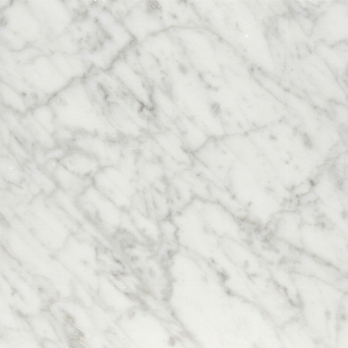Gioia venato
quarry of origin
Gioia
Carrara, Italy
Petrografic name (according EN 12407): Marble
Macroscopic description: A compact, aphanitic lithotype that is white verging on light grey in colour with frequent grey veins micrometric in thickness with a more or less perpendicular orientation. There are frequent dark grey subrounded patches and spots up to subcentimetric in size. Surface pores are scarce.
Technical data provides a frame of reference only. As stone is a product of nature, up to date testing to determine specific physical qualities should be repeated for each major project. We decline any responsability for the mis-use of this data, since said data is sourced from the quarry.
Physical mechanical characteristics
| STANDARD | U.M. | MEAN VALUE | ST. DEV. | |
 EN 13755-08 EN 13755-08 |
Water absorption at atmospheric pressure | % | 0,12 | 0,01 |
 EN 1936-07 EN 1936-07 |
Apparent Density | KG/m3 | 2710 | 5,2 |
 EN 1936-07 EN 1936-07 |
Open porosity | % | 0,4 | 0,02 |
 EN 12372-07 EN 12372-07 |
Flexural strength | |||
| (in natural conditions) | MPa | 11,6 | 2,5 | |
| (EN 12371-03 exposed to 48 frost cycles | MPa | 9,6 | 1,9 | |
 EN 1926-07 EN 1926-07 |
Uniaxial compressive strength | MPa | 101,4 | 10,8 |
 EN 14231-04 EN 14231-04 |
Slip resistance (honed finishing) | |||
| (dry) | USRV | 71 | 2,7 | |
| (wet) | USRV | 33 | 2,4 | |
Block and slab characteristics
Average size of blocks: 3,00 x 1,70 x 1,70m.
Slabs are preferably cut against the grain or perpendicular to the grain, i.e. the hard way or the easy way.
 Cutting of blocks
Cutting of blocks  Surface lavoration
Surface lavoration
 Cutting of blocks
Cutting of blocks  Surface lavoration
Surface lavoration
Microscopic description according to EN 12407 e EN 12460
| A crystalloblastic metamorphic lithotype composed of calcitic blasts of varying dimensions (from 60 to 600 µm) of a subeuhedral/euhedral shape with sutured or straight grain boundaries. The structure is anisotropic due to the preferential orientation of the foliation. The veins are composed of calcitic crystals that are particularly clouded by opaque minerals and blister inclusions, calcitic microblasts (20 ÷ 30 µm), idioblastic pyrite (< 20 µm), quartz and feldspars (< 350 µm) and acicular muscovite. |




